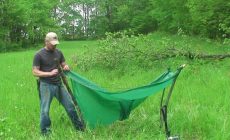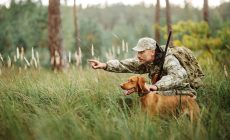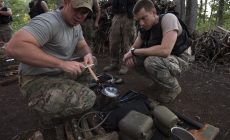
Gun season has been officially open for over a week, and guys have shot several bucks in your hunting area. The surviving animals hole up in the brush and don’t move unless necessary during daylight. Hell, many days it is difficult to see hide or hair of a deer; but, hang in there if you want to shoot something. This article provides some information on how to hunt through the mid-season lull.
1. Pile Into the Cover
Ranging from October through to the peak of the runt, I choose to hunt along the fringes of overgrown fields, woodland thickets, cutovers, and other similarly secure areas. However, later in the season, I choose to sneak through the more remote thickets and spend time around the trees along the back. Gunshots, human scent, ATVs and other elements of pressure blast deer patterns to bits, but there is a constant – cover. Buck come from all over to hide in the secluded thickets. If the buck chooses to leave the thickets, others may move in to browse and sleep. The animals continue to come and go well into January, and you never know how many deer you could see when perching deep in the cover. If you choose to hunt at dusk be sure that you have the best night vision scope.
2. Shooting from the Treetop
In some cases, the climbing tree stand has web seats or sliding fabric. If you are able to adjust the seat to hunt, you can shoot with your back to a tree. You could also turn around, slide the seat out, and hunt facing the tree. The latter option works well in many gun-hunting situations; however, it is recommended that you screw spare steps into each side of the tree. This will allow you to lean forward and rest the rifle over a step and against the tree when you see a deer. From the solid rest position, you can be sure to shoot the deer.
3. Hunting in the Middle of the Day

Allow me to share a point with you that you may have heard as a priority for hunting buck. The best shooting time for the buck is from 10:00 am until noon. Outside of these hours, it is best to head back up into the tree stand and sit in the remote cover or even go for a snooze. Around lunchtime, a deer that has traveled all night and rested until first light may get up to stretch, browse or nose when coming into late estrous.
4. Use a Key On the Strip Cover
It is important to use a stand or still when hunting near the last strips of cover to ensure the brush is not flattened by snow or frost. Skittish buck utilizes each ounce of remaining cover when feeding and resting; therefore, thick strips of the cover are the prime areas to watch in wind-sheltered areas or ravines.
5. Using the Prone Position
When spotting deer on the open plains, you should not fool around. It is recommended that you hit the ground in commando style resting the .280 or .30-06 rifle over the daypack. Once I glass the deer, I move and become comfortable with my elbows on the ground and cheek tightly against the stock. For accurate shooting, it is best to place the crosshairs behind the deer’s shoulder, then press the trigger and punch the tag from a steady shooting position. Setting up long-range shots in open cover requires patience and careful planning. You have lots of time to create an ideal spot, so try magnifying the scope on your rifle.
6. Using the Rattling Horns
Unless you are hunting on controlled private hunting grounds, the first week of the hunting season is not the ideal time to crack your horns. Buck may be rutting and placing pressure on the surrounding land, as well as on the track you are hunting, will knock the animals off their normal travel schedule. However, you may shoot a buck if you consider these three elements:
Set Up Shots in Secluded Thickets

The ideal area to set up is in secluded thickets. This is where you are most likely to find buck prowling and searching for a good fight over turf and hot dogs.
Bagging the Aggressive Blind Rattling
Pressured buck may not wish to hear the racket of aggressive blind rattling received in the bow season; therefore, you may land up pushing the deer further away from your blind or stand. Instead, rattle the blind lightly when you see a whitetail walking out of gun range or moving along a ridge where he will be out of sight. Attempt to catch his attention and stop him for a shot.
Rattle at Least Three Weeks into the Season
Arguably, the best time to rattle is three weeks into the hunting season. Few hunters stay in the woods beyond the first ten days of the gun season leaving the surviving deer to settle down. This is the post-rut and many mature bucks will set out for the last hot does. In this situation, you can engage in some blind rattling, but don’t make it too aggressive. Hit the horns if you note a buck far away, and only shoot if he stops to turn your way.
7. Later can be Best
Later in the hunting season, things will come full circle. For instance, a buck shifting his core area closer to the does during the rut period will return to the habitat he utilized in the early fall. Most bucks pushed out of their preferred areas tend to return home. To shoot the buck, you should consider hunting in the same way as the pre-rut period. Place stands in funnels and attempts to ambush the buck as they travel between food sources and beds.























2 Comments
Nisha Batel
January 15, 2022 - 4:46 amThanks for the tips.
Steve
January 18, 2022 - 9:53 pmthanks very informative